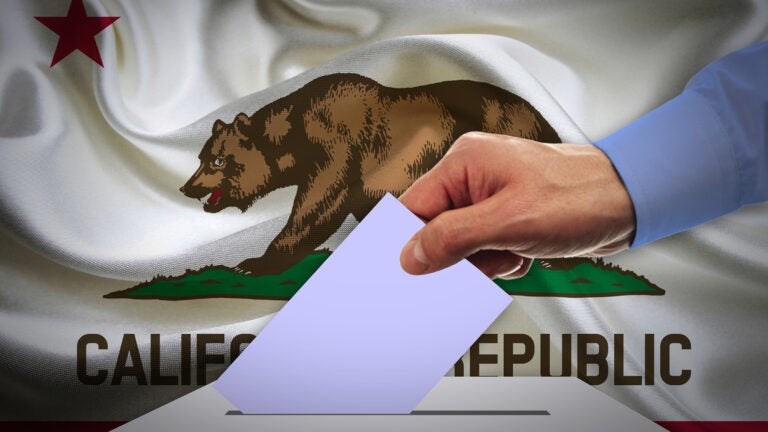
(Photo/iStock)
Election 2024: Inside California’s ballot propositions
When Californians head to the polls in November, they’ll vote on 10 statewide ballot measurestackling critical policy issues like affordable housing, climate resilience and modernizing the state’s public schools. USC experts are available to discuss this year’s statewide ballot propositions.
Contact: Nina Raffio, raffio@usc.edu or (213) 442-8464; USC Media Relations, uscnews@usc.edu or (213) 740-2215
California’s ballot measures: A mix of legislative proposals and citizen initiatives

“California continues to be the national leader in allowing citizens to use ballot measures to resolve important state issues,” said John G. Matsusaka, executive director of the Initiative and Referendum Institute at USC, which studies and tracks ballot initiatives and propositions nationwide.
“This year, 5 of the 10 propositions currently set for the ballot came from the legislature and 5 came from citizen petitions. The legislative propositions came to the voters because the California constitutions requires the legislature to get voter approval for bond issues and constitutional amendments. The propositions that came from citizen petitions — called “initiatives” — are attempts to override the legislature. Groups typically sponsor initiatives after they fail to persuade the legislature to pass a law they want, in an effort to go over the heads of elected officials to the final authority, the people.”
Read more on USC News: 2024 California ballot measures: Q&A with John Matsusaka
Matsusaka is the Charles F. Sexton Chair in American enterprise and a professor of business, law and political science with joint appointments at the USC Marshall School of Business and USC Gould School of Law.
Contact: matsusak@usc.edu
Prop. 2: A game-changer for schools and housing

Prop. 2 proposes issuing $10 billion in bonds to fund the construction and modernization of California’s public education facilities. Of this amount, $8.5 billion would be allocated to elementary and secondary schools, while $1.5 billion would support improvements at community colleges.
“In addition to supporting the badly needed upgrade, renovation and construction of schools across the state, Prop. 2 is also likely to be used by some school districts to support efforts to develop housing for teachers and staff. While this might seem like an unusual expansion of the responsibilities typically taken on by school districts, the critical housing shortage in California has made it necessary,” said Pedro Noguera, dean of the USC Rossier School of Education.
“In many school districts, teachers and staff frequently cannot afford to live in the communities where they work and are forced to endure long commutes. To attract and retain critical personnel many districts will use funding made available by Prop. 2 to develop surplus school property into housing. Given the tremendous need, the funding couldn’t come at a better time.”
Contact: pnoguera@rossier.usc.edu and evaristo@rossier.usc.edu
Prop. 2: Essential upgrades for safe, modern learning environments
 “The two school construction bond measures on the California ballot in November — $10 billion statewide and $9 billion in LAUSD — are essential for ensuring that every student in the state has a safe and up-to-date place to attend school every day,” said Lawrence Picus, the Richard T. Cooper and Mary Catherine Cooper Chair in Public School Administration at USC Rossier.
“The two school construction bond measures on the California ballot in November — $10 billion statewide and $9 billion in LAUSD — are essential for ensuring that every student in the state has a safe and up-to-date place to attend school every day,” said Lawrence Picus, the Richard T. Cooper and Mary Catherine Cooper Chair in Public School Administration at USC Rossier.
“Many of our school facilities are well over 50 years old and need important upgrades to support the technology and learning environment needs of our children. These funds will help make the classroom (and the entire school) a place where all our children can excel every day,” said Picus.
Contact: lpicus@rossier.usc.edu
Prop. 4: Weighing the costs, benefits of California’s most ambitious environmental proposal yet

Prop. 4 proposes borrowing $10 billion for a range of critical environmental projects, including flood control, water infrastructure, wildfire management, and parks. Experts have expressed concerns about its complexity, arguing that the bundled nature of the measure could make it difficult for voters to assess the merits, costs, and benefits of each component.
“Every piece of legislation features costs. In the case of Prop. 4, what will middle class and poor people pay for this legislation? Which geographic areas in California disproportionately gain? How much will environmental quality be improved by this legislation? When will these gains occur? How much do people value these environmental improvements?” said Matthew Kahn, an economic expert on climate change policy, energy efficiency and urban quality of life.
“When we go to a restaurant, we can construct our own meal based on choosing which courses we want to eat. In contrast, this proposition resembles a fixed price, fixed menu meal. Why didn’t the authors propose a separate ballot initiative for each of the ballot’s pieces? There could be a separate vote on flood control and on investing in parks. Under these rules, voters could better prioritize which of these environmental items they care the most about,” said Kahn, provost professor of economics and spatial sciences at the USC Dornsife College of Letters, Arts and Sciences.
Contact: kahnme@usc.edu
Prop. 33: Expanding rent control
 Prop. 33 aims to repeal the Costa‑Hawkins Rental Housing Act, a law that currently restricts rent control in California. If passed, Prop. 33 would give local governments more power to expand rent control to more types of housing.
Prop. 33 aims to repeal the Costa‑Hawkins Rental Housing Act, a law that currently restricts rent control in California. If passed, Prop. 33 would give local governments more power to expand rent control to more types of housing.
“This issue is complex, and may be confusing to some voters. Early data on voters’ preferences show that California voters are evenly split on the issue,” said Christian Grose, a professor of political science and public policy at USC Dornsife and academic director of the USC Schwarzenegger Institute for State and Global Policy at the USC Price School of Public Policy.
“In a 2024 poll I conducted at USC in partnership with California State University showed that 39% supported the repeal of Costa-Hawkins (a yes vote on Prop. 33) and 41% opposed repeal (a no vote on Prop. 33) with 20% undecided. These positions will likely change as the campaign for and against this proposition heats up before November.”
Contact: cgrose@usc.edu
Additional Experts
Santina Contreras is an expert on environmental planning, natural hazards and community engagement who can discuss the impacts of Prop. 4. Contreras is an assistant professor at the USC Price School of Public Policy.
Contact: santinac@usc.edu
###
Mindy Romero is a political sociologist whose research focuses on political behavior and race/ethnicity, and seeks to explain patterns of voting and political underrepresentation, particularly among youth and communities of color in California and the U.S. Romero is the founder and director of the Center for Inclusive Democracy at USC Price.
Hear directly from Romero and other USC political science and public policy experts at Political Pulse ’24: Making Sense of California’s Ballot Propositions, a webinar being held on Wednesday, September 18, 2024 12pm to 1pm and hosted by the Bedrosian Center on Governance at USC Price. RSVP >>
Contact: msromero@usc.edu
###
(Photo/iStock)



